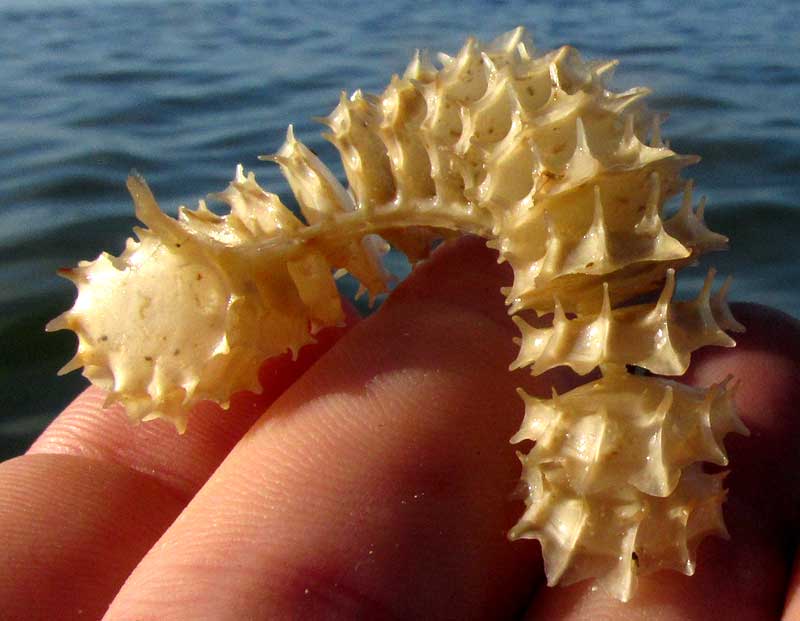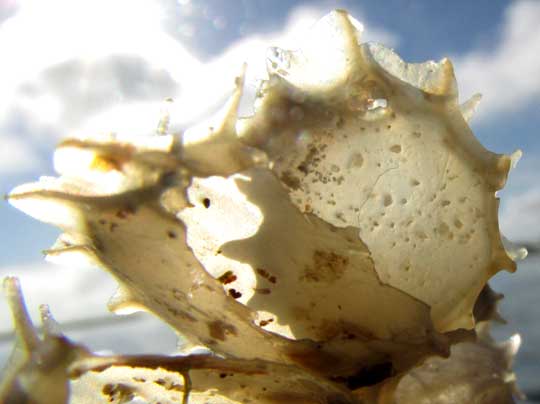Excerpts from Jim Conrad's
Naturalist Newsletter

from the December 28, 2014 Newsletter issued from Río Lagartos, on the Yucatan Peninsula's northern coast (~N21.60°, ~W88.16°), Yucatán state, MÉXICO
PEAR WHELK EGG CASE
In our December 14th Newsletter we looked at the pretty egg cases of the True Tulip sea snail washed ashore here, which you can review at www.backyardnature.net/yucatan/tulipa.htm.
This week yet another kind of egg case turned up on the sandy, Gulf-facing beach of the slender finger of land separating Ría Lagartos Estuary from the sea. That's it above.
A close-up of a shattered bladder inside which tiny, white forms in the shape of snails were discernible with magnification, is shown below:

By now we know that such floating egg cases are produced by gastropod-type mollusks of the kind producing shells of the often-ornamented and prettily colored kind people like to pick up from sandy beaches. This particular egg case, with its individual bladders bearing short spines along both their upper and lower margins, and the bladders themselves with one side broader than the other and with different-shaped spines, was produced by what's commonly called the Pear Whelk, BUSYCOTYPUS SPIRATUS*.
Pear Whelks are classic seashell-type, pear-shaped sea snails that feed on sandy bottoms of the Gulf of Mexico, and on the US Atlantic coast reach as far north as about North Carolina. They prey on clam-type mollusks -- bivalves. Pear Whelks need only fifteen minutes to an hour to pry open and consume a thin-shelled, clam-type mollusk.